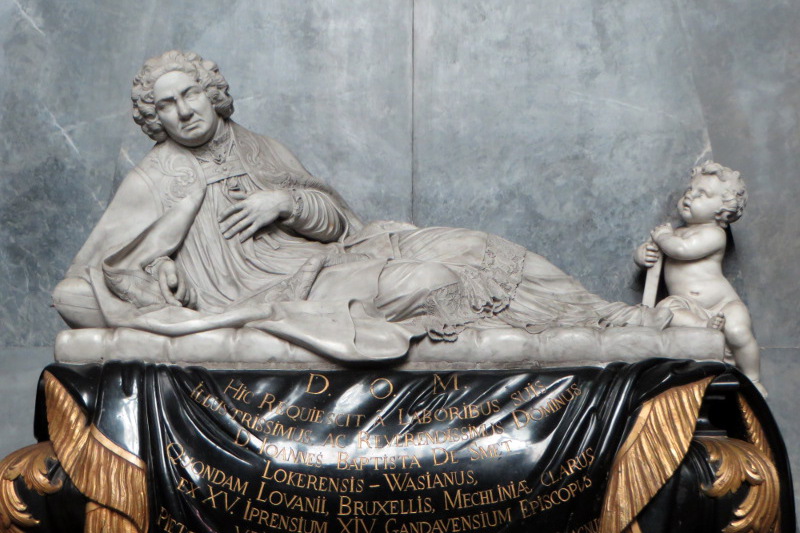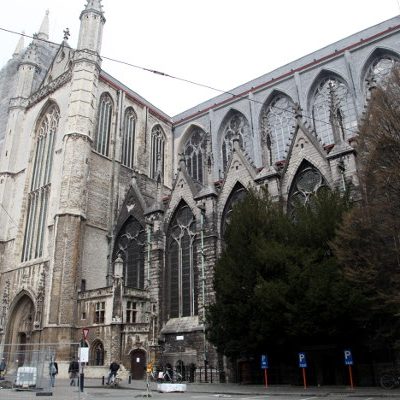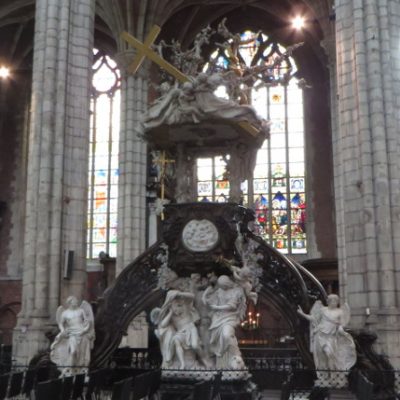Researching the history of Saint Bavo Cathedral is like peeling an onion that becomes more complex, detailed, and varied as you remove each layer. I doubt you could have a church this old in Belgium without it having an incredible history.
The Cathedral is obviously named after St. Bavo/Baafs who was born in 622 to a rich nobleman. His name at birth was Allowin and throughout his privileged life, he gained a great deal of wealth via his family and through marriage. He is described in Dutch literature as being a soldier known for his wild and excessive ways. After the death of his wife, he attended a sermon by Saint Amand and was so intrigued that he followed the Bishop throughout Flanders to listen to his sermons.
Bavo soon decided to atone for his excessive lifestyle and gave all of his possessions to the poor of Belgium and entered the monastery. He lived in seclusion for the rest of his life before dying at the St. Bavo Abbey (often confused with the Cathedral). He is considered the patron saint of Ghent.
The building itself was built layer upon layer (onion style) from the crypt up (or so it seems). First, there was a wooden church dating to 942 (then known as the Chapel of St. John the Baptist) and then a Romanesque style church dating to 1038, which can still be seen in the present day crypt.


Next came the gothic style chapels, choir, nave, and towers that began construction in 1353 and were built piece by piece until 1569 when the work was finally completed. It was in this “under construction” version of the cathedral that Charles the V, King of Spain (1516) and the Holy Roman Emperor (1519), was baptized in 1500. This is also the building that you see today (above ground).
The cathedral is most famous for being the home of the Van Eyck brother’s Ghent Altarpiece commonly known in English as the Lamb of God (next post).
But, this isn’t the only famous Altarpiece painting in the Cathedral. Close to the entrance to the crypt is The Conversion of Saint Bavo by Peter Paul Rubens, commissioned by bishop Antoon Triest and painted as part of a series of paintings meant to adorn the high altarpiece.

In one of the side chapels is one of Frans Pourbus the elder’s rare historical paintings: Christ Among the Doctors. Like his son (Pourbus the younger) and father (Pieter Pourbus), Pourbus the elder was a highly sought after portrait painter during the sixteenth and seventeenth centuries; most notably with European nobility and royalty. His portraits can be found in galleries around the world (such as the Louvre).

Beyond the artwork and paintings, the medieval Romanesque style crypt is incredibly quiet and peaceful. Wandering its depths was the highlight of our visit. Here you will find wonderful stories, old paintings, and the crypts of people long forgotten by the world, including Arthus de Ghistelles and Michelle of Valois (the remaining portion of her tomb can be seen in the lower right-hand corner of photo #21).






















0 comments on “Saint Bavo Cathedral (Sint Baafskathedraal)”Add yours →